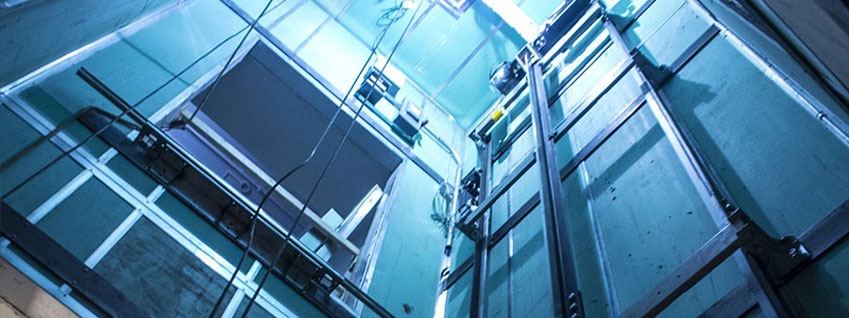Digging Into the Globe of Elevators: Usual Problems Faced by Different Lift Systems
As we browse via the vertical transport systems of modern buildings, elevators stand out as a vital part of our everyday lives. From hydraulic lifts to grip systems and machine-room-less layouts, each lift kind comes with its collection of usual issues.
Hydraulic Lifts
Hydraulic elevators, commonly liked for low-rise structures, make use of fluid pressure to control the activity of the lift automobile (lift repair companies). This system entails a hydraulic pump pushing oil right into a cyndrical tube, creating the elevator to relocate the wanted direction. While hydraulic lifts are understood for their smooth and silent operation, they do feature their own collection of usual issues
One widespread issue with hydraulic lifts is oil leak. The seals in the hydraulic system can wear over time, leading to oil infiltration. This not just produces a mess yet can likewise influence the lift's efficiency if left unaddressed. Additionally, concerns with the control system, such as malfunctioning valves or a malfunctioning pump, can cause disruptions in the elevator's movement.
Normal maintenance and prompt fixings are vital to guarantee the smooth performance of hydraulic lifts. By resolving these common issues proactively, structure owners can decrease downtime and make certain the safety and efficiency of their vertical transportation system.
Traction Elevators
When thinking about upright transport systems in structures, an additional common kind in addition to hydraulic lifts is the traction lift. Traction elevators run using a system of ropes and counterweights that relocate the elevator car by gripping onto the hoist ropes. This device enables smoother and quicker vertical transportation contrasted to hydraulic systems.
One of the typical problems encountered by traction elevators is rope wear. The consistent activity of the ropes within the traction system can lead to tear and use gradually, potentially causing the lift to malfunction or end up being risky for usage. Routine examinations and upkeep of the ropes are vital to make sure the lift's correct functioning and security.
Another concern that traction elevators might come across is connected to the control system. Troubles with the control system can bring about issues such as irregular movement, delays in reaction times, or even total shutdowns. Regular testing and maintenance of the control system are important to avoid such concerns and make sure the elevator's reliability.
Machine-Room-Less (MRL) Elevators

One of the crucial parts of MRL elevators is the compact gearless traction machine that is mounted within the hoistway. This equipment effectively drives the lift auto without the requirement for cumbersome equipment found in standard traction elevators. Furthermore, MRL lifts typically make use of a counterweight system to balance the car, further enhancing their power efficiency.
Regardless of their advantages, MRL lifts might encounter difficulties connected to maintenance and repair work as a result of the constrained space for tools setup. Ease of access for servicing parts within the shaft can be limited, requiring specialized have a peek at this site training for service technicians. Proper maintenance schedules and regular inspections are essential to make certain the continued smooth operation of MRL lifts.
Overloading and Weight Limitation Issues
Are elevators equipped to manage excess weight tons effectively and securely? Straining and weight restriction concerns are important issues in lift operations. Elevator manufacturers design lifts with specific weight abilities to make sure traveler security and devices long life. Going beyond these weight limitations can result in various problems, including mechanical failings, delays, and safety and security dangers.
When lifts are overwhelmed, it puts extreme stress on the electric motor, cords, and other elements, potentially causing breakdowns or malfunctions. If they discover excess weight, security devices such as sensing units and overload sensors are in place to avoid lifts from relocating. Additionally, going beyond weight restrictions can result in increased power consumption and deterioration on the elevator system.
To minimize overwhelming problems, building managers should prominently display weight limitations in lifts and educate residents on the relevance of adhering to these constraints - lift repair companies. Routine upkeep checks by certified specialists can additionally help ensure that lifts are running within secure weight criteria. By addressing More hints overloading and weight restriction issues proactively, building proprietors can enhance elevator safety and performance
Electrical System Failures
Exceeding weight limitations in lifts can not just lead to mechanical problems but likewise potentially add to electric system failures within the lift framework. Electric system failures are an important problem in lift operation, as they can cause unexpected shutdowns, malfunctions, or even safety risks.
Furthermore, power surges or changes in the electric supply can also interfere with the elevator's procedure, impacting its performance and security. These electric disruptions can damage sensitive lift components such as control panels, motherboard, or sensors, bring about system failings. Regular maintenance and examinations are critical to recognize and resolve potential electrical problems without delay, making certain the safe and efficient operation of lift systems. By adhering to weight limits and conducting routine electrical system checks, building owners can minimize the threat of electric failings in elevators.
Conclusion

Hydraulic lifts, often preferred for low-rise buildings, use fluid stress to manage the activity of the elevator cars and truck.When considering upright transport systems in buildings, another typical type apart from hydraulic lifts is the grip lift. Traction lifts operate making use of a system of ropes and weights that move the elevator cars and truck by clutching onto the hoist ropes. Unlike traditional lifts that need a separate equipment room to house the devices, MRL lifts incorporate many of the parts within the shaft, eliminating the need for a committed device area.In final thought, lifts encounter common concerns such as hydraulic malfunctions, grip system failings, and electric system problems.